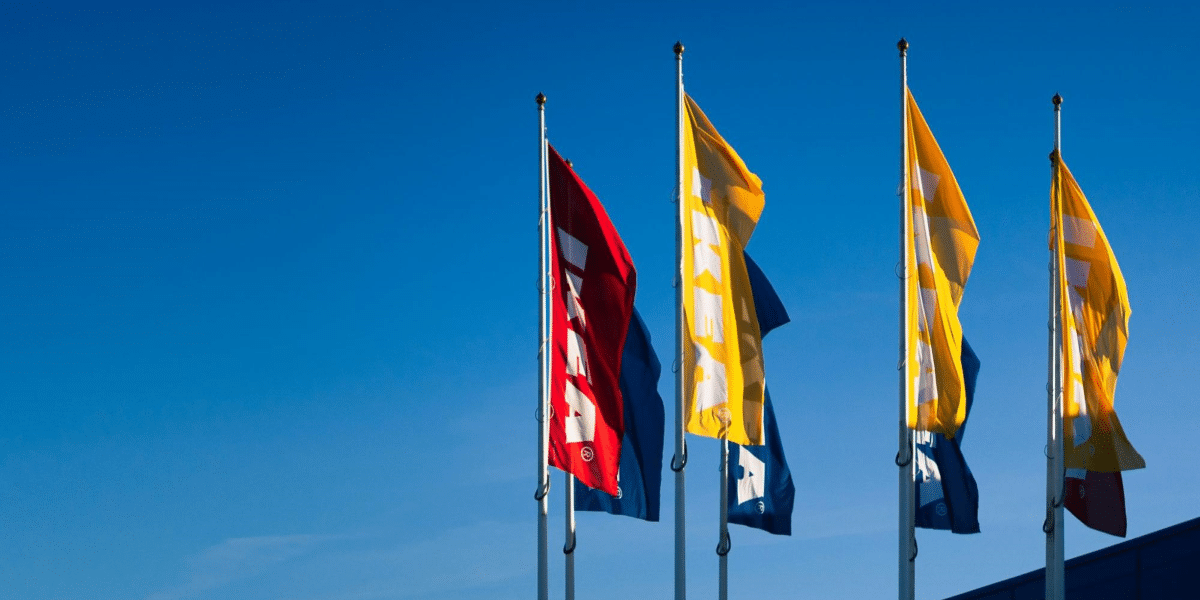IKEA, the global home furnishings giant, has long been known for its innovative approach to marketing, and its recent “Sleepeasy” pop-up is a prime example of how experiential marketing can capture the attention of consumers in fresh, engaging ways. The “Sleepeasy” pop-up, which offered a curated sleep experience for visitors, not only highlighted IKEA’s range of bedroom furniture and sleep products but also allowed customers to fully immerse themselves in a personalized sleep environment.
The Concept Behind IKEA’s “Sleepeasy” Pop-Up
The “Sleepeasy” pop-up was designed to promote better sleep habits while showcasing IKEA’s products that contribute to a good night’s rest. Visitors were invited to experience different bedroom setups tailored to various sleep preferences, allowing them to test mattresses, pillows, and bedding firsthand. By incorporating expert advice on sleep hygiene and the ideal sleep environment, IKEA created a space that felt both informative and relaxing.
The pop-up experience was crafted to appeal to all senses, combining soft lighting, calming scents, and tranquil sounds to transport visitors into a cozy, sleep-friendly atmosphere. This level of engagement allowed participants to understand how IKEA’s sleep solutions could improve their quality of rest and create a more comfortable home environment.
Experiential Marketing
The “Sleepeasy” pop-up is an excellent example of experiential marketing done right. Rather than relying on traditional advertising, IKEA gave customers the opportunity to interact directly with its products in a meaningful and memorable way. This hands-on experience encouraged people to connect with the brand on a personal level, building trust and fostering stronger brand loyalty.
Experiential marketing allows companies like IKEA to go beyond simply showcasing products—they create experiences that resonate with customers long after the event is over. By focusing on how their products can solve real-world problems, such as poor sleep quality, IKEA positioned itself as a brand that understands the needs of its customers and provides practical solutions.
A Social Media Buzz Generator
IKEA’s “Sleepeasy” pop-up also capitalized on the power of social media. Attendees were encouraged to share their experiences on Instagram and other platforms, turning the event into a viral sensation. With photo-friendly setups and hashtag campaigns, IKEA ensured that the event gained widespread visibility, reaching far beyond those who attended in person.
By creating a shareable experience, IKEA tapped into the modern consumer’s desire for Instagram-worthy moments, effectively turning its customers into brand ambassadors. This word-of-mouth promotion is an essential component of successful experiential marketing campaigns, and IKEA used it to great effect.
Why “Sleepeasy” Worked So Well
The success of IKEA’s “Sleepeasy” pop-up can be attributed to several factors:
- Immersive Experience: By allowing visitors to test products in real time, IKEA created a hands-on experience that allowed customers to visualize how its products could improve their lives.
- Emotional Connection: The event went beyond product promotion, offering valuable sleep tips and information that helped consumers form a deeper connection with the brand.
- Social Media Integration: IKEA maximized exposure through user-generated content, ensuring the pop-up reached an even larger audience online.
Conclusion
IKEA’s “Sleepeasy” pop-up proved to be an experiential marketing triumph, blending product education with a fully immersive, memorable experience. By focusing on sleep, one of the most important aspects of daily life, IKEA successfully showcased its products in a way that resonated with customers and generated significant social media buzz.
For a deeper dive into IKEA’s experiential marketing success with the “Sleepeasy” pop-up, read more influencergazette.com.
Published by: Khy Talara

















